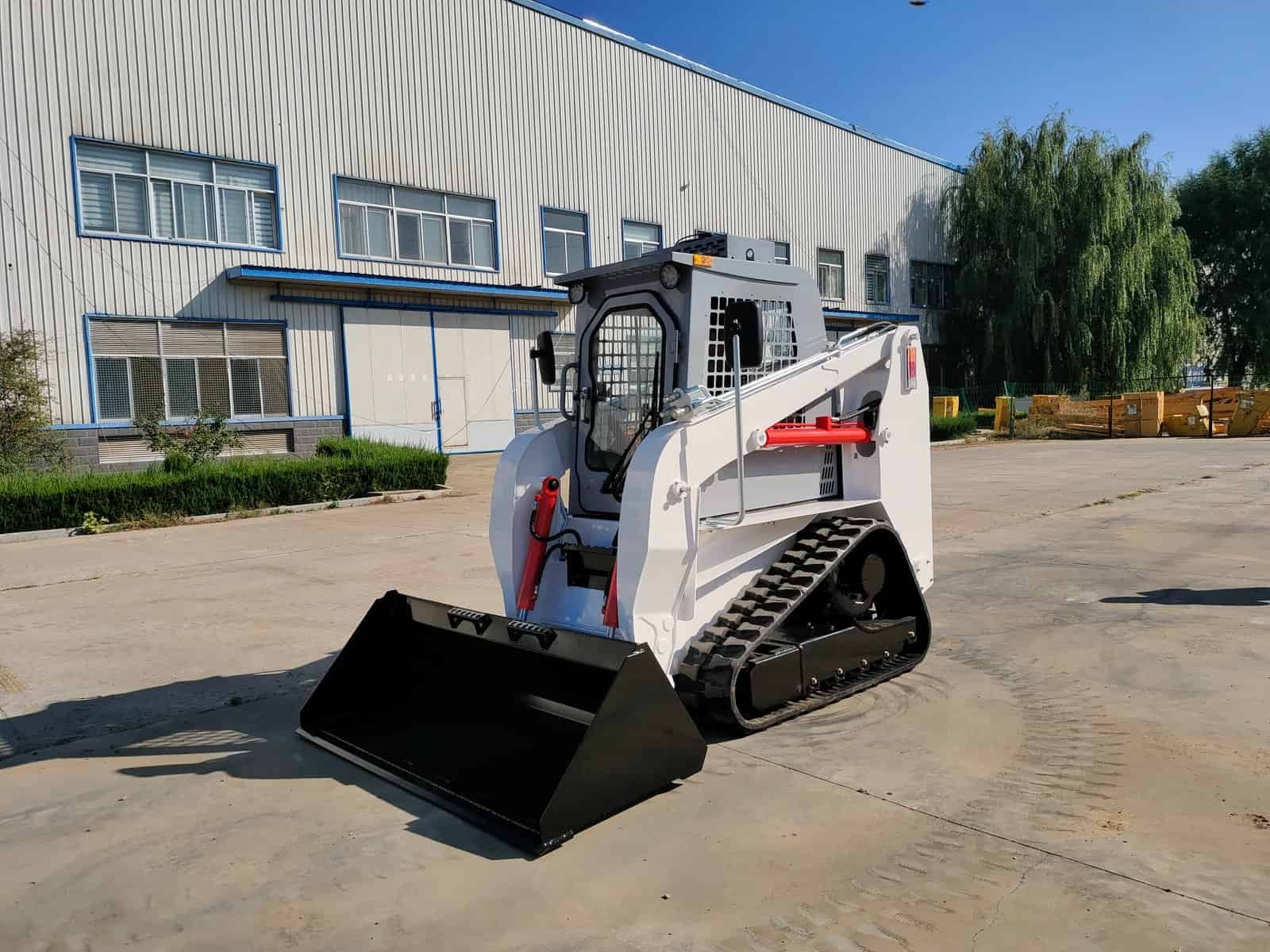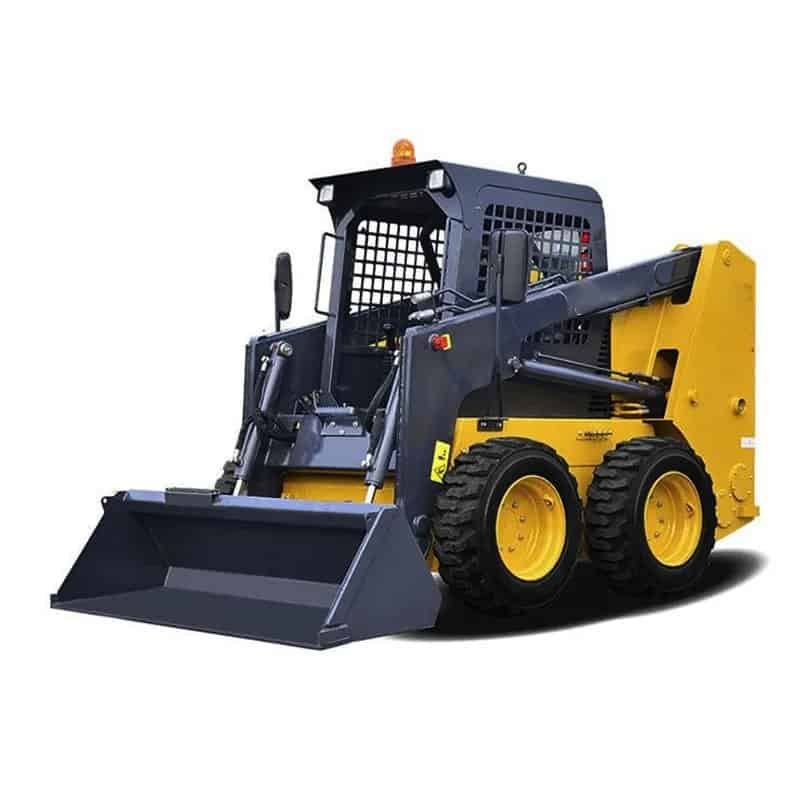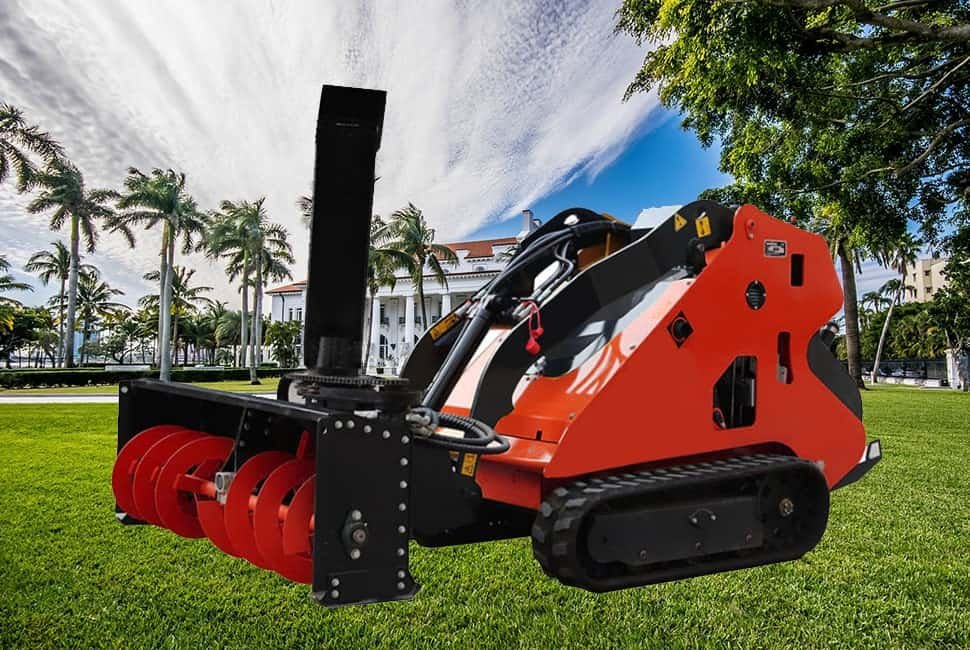Choosing the right skid loader can be confusing, especially when weight plays a crucial role in transportation and operation. Without understanding its weight, you may face difficulties in hauling or even risk exceeding load limits. This guide will help you determine the ideal skid loader weight for your needs.
Skid loaders typically weigh between 1,300 kg (2,800 lbs) and 5,500 kg (12,000 lbs), depending on the model and configuration. Lighter models are suited for small-scale projects, while heavier ones offer better stability and power for demanding tasks. Selecting the right weight ensures efficiency and safe transportation.
Now, let’s explore the different weight categories of skid loaders and how they impact performance and usability.
What Is the Weight Range of a Skid Loader?
Skid loaders are available in a wide range of sizes, and their weight plays a crucial role in determining their usability, ease of transport, and overall operational efficiency. The weight of skid loaders typically spans from 1,300 kg to 5,500 kg. For instance, the Bobcat S70, a small model, weighs approximately 1,268 kg, whereas larger models, such as the Caterpillar 272D3, can weigh up to 4,500 kg.
Compact skid loaders, due to their smaller size and lighter weight, offer superior maneuverability and ease of transport. This makes them particularly well-suited for tasks like light construction or landscaping, where agility and accessibility are key. On the other hand, heavier models boast greater lifting capacity and stability, which are vital for heavy-duty operations. These features enable them to handle more demanding tasks with ease, making them indispensable in various industrial and construction settings.

What Factors Affect Skid Loader Weight?
The weight of a skid loader is determined by a variety of design and operational factors that work together to shape its performance and capabilities.
Some of the most important factors influencing the weight of a skid loader include the size of its engine, the type and complexity of its hydraulic components, whether it is equipped with tracks or wheels, the materials used in its construction, and the attachments it can accommodate. Generally speaking, tracks tend to add more weight to a skid loader compared to wheels, as they provide better traction and stability but come at the cost of increased mass.
Heavier skid loaders are often designed with reinforced frames to enhance their structural integrity and durability. They also typically feature advanced hydraulic systems that offer greater power and efficiency, as well as larger fuel tanks to support extended periods of operation. Additionally, the weight of a skid loader can be significantly affected by the attachments it carries. For example, attachments such as augers for drilling, buckets for material handling, and grapples for lifting and moving objects can all add to the overall weight of the machine.
What Is the Difference Between Light and Heavy Skid Loaders?
Skid loaders are categorized into light and heavy-duty types, each designed to meet specific needs and applications.
Light skid loaders, which typically weigh between 1,300 and 2,500 kg, are perfect for small-scale projects. These compact machines are highly maneuverable and can easily navigate tight spaces, making them ideal for tasks such as landscaping, small construction sites, or working in confined areas. Their smaller size also means they are more fuel-efficient and easier to transport, reducing operational costs and logistical challenges.

On the other hand, heavy-duty skid loaders, weighing between 3,000 and 5,500 kg, are built for more demanding tasks. These robust machines are designed to handle the rigors of commercial construction and industrial operations. They offer superior lifting capacity, enhanced stability, and greater compatibility with heavy attachments, such as large buckets, pallet forks, or tree spades. These features make them indispensable for large-scale projects where heavy lifting and powerful performance are required.
While light skid loaders excel in agility and efficiency for smaller tasks, heavy-duty models provide the strength and durability needed for large-scale commercial and industrial applications.
How Does Skid Loader Weight Impact Transportation and Operation?
Transporting a skid loader is a task that demands meticulous planning, especially to adhere to weight regulations and ensure safety. The process involves several considerations to match the skid loader’s weight and characteristics with the appropriate transportation method.
For lighter skid loaders, which generally weigh between 1,300 and 2,500 kg, standard trailers are usually sufficient for transportation. These trailers are widely available and can accommodate the smaller size and weight of light skid loaders without requiring special permits or equipment. However, it’s essential to ensure that the trailer is properly secured and rated for the specific weight of the skid loader to avoid any issues during transit.
When it comes to heavier skid loaders, weighing between 3,000 and 5,500 kg, the transportation process becomes more complex. These larger machines often necessitate specialized equipment, such as heavy-duty flatbed trailers or low-boy trailers, which are designed to handle their substantial weight. Additionally, transporting heavier skid loaders may require obtaining specific permits from relevant authorities, as they can exceed standard weight limits for road transportation. Operators must familiarize themselves with local regulations and ensure all necessary documentation is in order before hitting the road.
Beyond the weight and type of trailer, operators should also consider the ground conditions where the skid loader will be transported and used. Heavier machines, due to their increased weight, can cause ground damage, particularly on soft terrains like mud, sand, or newly laid soil. To mitigate this risk, it’s crucial to assess the stability of the ground and, if necessary, take measures such as using ground mats or choosing alternative routes to prevent soil compaction and damage.
Transporting a skid loader involves careful planning and consideration of its weight, the type of trailer used, necessary permits, and ground conditions. By addressing these factors, operators can ensure a smooth and compliant transportation process, regardless of whether they are moving a light or heavy-duty skid loader.
How to Choose the Right Skid Loader Weight for Your Needs?
Choosing the perfect skid loader weight is a crucial decision that hinges on the specific demands of your project and the unique conditions of your worksite. The ideal skid loader should seamlessly integrate into your operations, enhancing efficiency and productivity without compromising on functionality.
For tasks such as landscaping and small-scale construction, light skid loaders are often the go-to choice. These agile machines, weighing between 1,300 and 2,500 kg, offer exceptional maneuverability and can easily navigate tight spaces. Their compact size makes them perfect for projects where precision and accessibility are paramount. Whether you’re working on a residential garden makeover or a small commercial building site, a light skid loader can provide the necessary power without overwhelming the space.
On the other end of the spectrum, heavy-duty skid loaders are designed to tackle the most demanding tasks. Weighing between 3,000 and 5,500 kg, these robust machines are built to handle the rigors of roadwork, demolition, and large-scale industrial projects. With their enhanced lifting capacity and stability, heavy-duty skid loaders can manage heavy loads and operate in challenging environments. If your project involves moving large quantities of materials, breaking down structures, or working in rugged terrain, a heavy-duty skid loader is likely the best fit.
When making your decision, it’s important to consider several key factors:
- Lifting Capacity: Ensure the skid loader can handle the weight of the materials and attachments you’ll be using.
- Ground Pressure: Lighter skid loaders exert less ground pressure, making them suitable for softer or more delicate surfaces. Heavier models, while more powerful, may require additional considerations to prevent ground damage.
- Transportability: Lighter skid loaders are generally easier to transport and can be moved using standard trailers. Heavier models may require specialized equipment and permits.

Consulting with suppliers and thoroughly reviewing equipment specifications can provide valuable insights and help you make a well-informed decision. Suppliers can offer personalized advice based on your project’s unique requirements, and detailed specifications will give you a clear understanding of each model’s capabilities and limitations.
By carefully evaluating your project needs and considering these factors, you can select a skid loader that perfectly matches your application and site conditions, ensuring a successful and efficient operation.
How Do Different Brands Compare in Terms of Skid Loader Weight?
Skid loaders are available in a wide range of weight categories to cater to various applications, and many manufacturers offer models to suit different needs. Renowned brands such as Bobcat, Caterpillar, and John Deere all produce skid loaders that span from lightweight to heavy-duty options.
For instance, the Bobcat S70 is a lightweight model that weighs approximately 1,268 kg, making it ideal for tasks that require agility and ease of transport. On the other end of the spectrum, the Caterpillar 272D3 is a heavy-duty skid loader that weighs a substantial 4,500 kg, offering greater power and lifting capacity for more demanding operations.
John Deere also contributes to the heavy-duty category with models like the 332G. These heavier skid loaders are designed to provide high horsepower and impressive lifting capabilities, making them suitable for large-scale projects and heavy-duty tasks.
When selecting a skid loader, it’s essential to compare different brands and models. Each manufacturer has its unique strengths and features, and by doing a thorough comparison, you can ensure that the model you choose perfectly aligns with your project’s specific requirements.
Краткое содержание
Skid loader weights vary widely, from 1,300 kg to 5,500 kg, influencing transportability and operational efficiency. Choosing the right weight ensures optimal performance for your specific needs.


